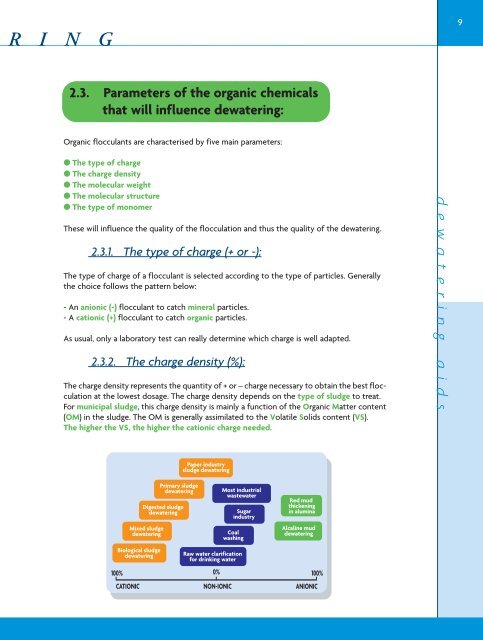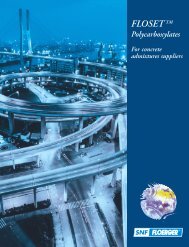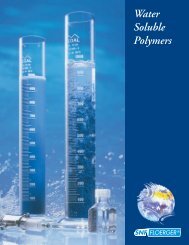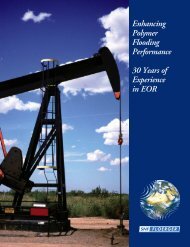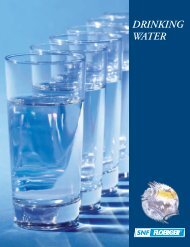SLUDGE DEWATERING - SNF Group
SLUDGE DEWATERING - SNF Group
SLUDGE DEWATERING - SNF Group
Create successful ePaper yourself
Turn your PDF publications into a flip-book with our unique Google optimized e-Paper software.
R I N G<br />
2.3. Parameters of the organic chemicals<br />
that will influence dewatering:<br />
Organic flocculants are characterised by five main parameters:<br />
● The type of charge<br />
● The charge density<br />
● The molecular weight<br />
● The molecular structure<br />
● The type of monomer<br />
These will influence the quality of the flocculation and thus the quality of the dewatering.<br />
2.3.1. The type of charge (+ or -):<br />
The type of charge of a flocculant is selected according to the type of particles. Generally<br />
the choice follows the pattern below:<br />
- An anionic (-) flocculant to catch mineral particles.<br />
- A cationic (+) flocculant to catch organic particles.<br />
As usual, only a laboratory test can really determine which charge is well adapted.<br />
2.3.2. The charge density (%):<br />
The charge density represents the quantity of + or – charge necessary to obtain the best flocculation<br />
at the lowest dosage. The charge density depends on the type of sludge to treat.<br />
For municipal sludge, this charge density is mainly a function of the Organic Matter content<br />
(OM) in the sludge. The OM is generally assimilated to the Volatile Solids content (VS).<br />
The higher the VS, the higher the cationic charge needed.<br />
Primary sludge<br />
dewatering<br />
Digested sludge<br />
dewatering<br />
Mixed sludge<br />
dewatering<br />
Biological sludge<br />
dewatering<br />
Paper industry<br />
sludge dewatering<br />
Most industrial<br />
wastewater<br />
Sugar<br />
industry<br />
Coal<br />
washing<br />
Raw water clarification<br />
for drinking water<br />
Red mud<br />
thickening<br />
in alumina<br />
Alcaline mud<br />
dewatering<br />
100% 0%<br />
100%<br />
CATIONIC NON-IONIC ANIONIC<br />
d e w a t e r i n g a i d s<br />
9


